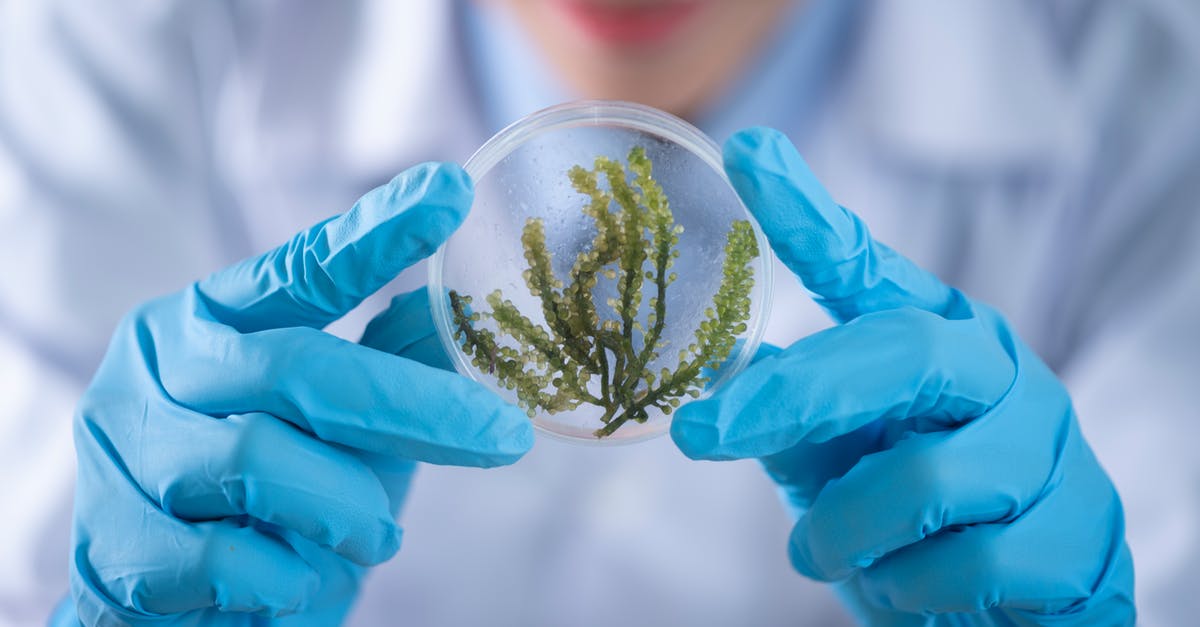Can university laboratories move away from single-use plastic?

Kerry Cheek, SRS Projects Coordinator, has a background working in both laboratory research and in sustainability. Here, she reflects on a recent project in which she researched laboratory plastic waste at the University of Edinburgh.
Why laboratory plastics?
I worked in a laboratory for two years after graduating from university. Specifically, I worked in cell culture for two relatively small labs at the University of North Carolina at Chapel Hill. Every day, I would use hundreds of pipettes, tens of culture dishes, multiple bottles of media poured into many smaller bottles of daily mixes. All of it plastic, all of it single-use.
This constant generation of waste did not sit well with me, even before I came to Edinburgh to study environmental sustainability. However, it was crucial to the success of the experiment, which in turn was crucial to our work improving anti-cancer drugs or understanding neuropsychiatric illness. Single-use plastics meant sterile procedure and safety: less risk of contamination, less risk of accidental injury.
This experience is not unique to the labs that I was working in, or the university, or the country. It is an issue that is gaining attention globally, even more so in response to growing awareness of the climate crisis. In 2014, worldwide laboratory research generated an estimated 5.5 million tonnes of plastic waste, equal to 83% of the plastic recycled worldwide in 2012.[I] While single-use plastic might be great for experiments, it is terrible for the environment… and finding solutions that work for both is no easy task.
What’s been done so far?
The University of Edinburgh is a leading research-intensive university, with more than 80% of research activity considered internationally excellent [II]. Laboratories are an integral part of the continued excellence of the University’s research but are also a large source of plastic waste. The University has a well-established lab sustainability programme that aims to identify ways to reduce the negative environmental and social impacts of lab operations without restricting our world-class academics’ ability to do what they do best. As part of this programme, the Department for Social Responsibility and Sustainability created a project to identify ways to improve plastic use and disposal in laboratories, particularly focused on the potential to reduce single-use plastics.
Lab plastics survey
To determine current practices and desired support for reducing plastic in University of Edinburgh laboratories, we conducted a survey in May, 2019. Some findings from the survey are below. More information can be provided if requested.
- There is a common misunderstanding that the University ‘doesn’t allow’ any lab plastics to be recycled. This misunderstanding is the largest listed barrier to recycling in labs.
- Further barriers to recycling are: waste contractors don’t accept certain plastic types; lack of bins; effort; uncertainty about recycling; contamination concerns.
- Support requested from the University: clear lab recycling instructions; centralised guidance for plastic-reducing initiatives; more accessible bins; a decontamination method to increase recycling.
Findings within the University
Currently, close to 75% of survey respondents report recycling some types of plastic in their labs. However, many people in University laboratories still report that they are ‘not allowed’ to recycle anything from a lab in general recycling streams.
To clarify, the University allows the collection of any non-contaminated plastic types which are accepted by the waste contractor (such as many media bottles and pipette tip boxes). Guidance on exactly what can be recycled is coming soon.
To clarify, the University allows collection of any non-contaminated plastic types which are accepted by the waste contractor (such as many media bottles and pipette tip boxes).
Any plastics which cannot be recycled, such as those contaminated during experimental procedures, are typically disposed of as clinical and biological waste. The University does not send waste to landfill, meaning that these would usually become ‘refuse derived fuel’, a process which generates energy from waste. Reducing plastic sent to clinical and biological waste, and increasing recycling, are crucial steps towards reducing laboratory plastic waste. Some recommendations for how to begin are at the bottom of this article.
Findings from further afield
Limited information is available on reducing single-use plastic in labs, likely because this is a relatively new field and there are not many platforms available for sharing best practice. That being said, a few universities who are currently working on the issue of laboratory plastic waste are listed below:
- University College London has generated a general advice poster for reducing single-use plastic in labs, which we have adapted for use in the University of Edinburgh, and have recently committed to being a ‘single-use-plastic free’ campus by 2024.
- The Basic and Clinical Neuroscience Team at Kings College London has implemented a recycling scheme to increase recycling of lab plastics, particularly from cell culture.
- University of York researchers have simplified their procurement and waste streams, as well as set up a decontamination station and colour-coded recycling system in participating labs.
- University of Manchester has committed to ‘eradicate avoidable single-use plastics’ by 2022. They have focused on plastic reductions in teaching labs, asking them to reuse gloves, weigh boats, tubes, cuvettes, to use biodegradable alternatives, and to use multi-media teaching aids.
Where do we go from here?
I would love to say that I fought for waste reduction while working in a lab, but I didn’t. The problem was too big and the importance of sterile procedure too high. Now, after researching this subject, I would love to say that I have simple solutions to offer… but I don’t. What we have found through this project is a starting point.
Labs are all different, so no single solution will fit; but that doesn’t mean solutions aren’t available. For years, laboratory research was conducted with reusable materials, such as glass, and in many cases we can revert back to these practices. For experiments that require sterile procedure, there are people pioneering methods to increase recycling of this plastic waste. What we need is for everyone to shout about their successes, and what they learn from their failures, so that we can begin to identify the solutions together.
Recommendations
Some general changes that most labs can make to reduce single-use plastic waste are listed below. More information will be available soon on our website, and a complete guidance list is available here.
- Plan experiments to reduce the size and quantity materials needed, especially single-use.
- Reduce packaging plastics by ordering in bulk or requiring suppliers to take back packaging.
- Share common equipment and materials to reduce ordering.
- Reduce plastic used for labelling by cleaning labels with ethanol or reducing label size.
- Utilise bottle top dispensers to reduce tips, pipettes, and other intermediary containers.
- Consider when reusable items will suffice, such as during bench work, and reuse single-use items or swap for glass or other reusable materials.
- Recycle non-contaminated items, such as media bottles and pipette boxes.
- Consider implementing a further recycling scheme, such as: non-contaminated gloves, collection points for packaging take-back schemes from suppliers, decontamination station for recyclable plastics.
- Where single-use is unavoidable, substitute single-use plastic for biodegradable materials, recycled plastic, or biodegradable plastics if the appropriate waste stream is in place.
References
[II] Research Excellence Framework. 2014.
Find out more:
Further questions? Email: Andrew.Arnott@ed.ac.uk





Recent comments